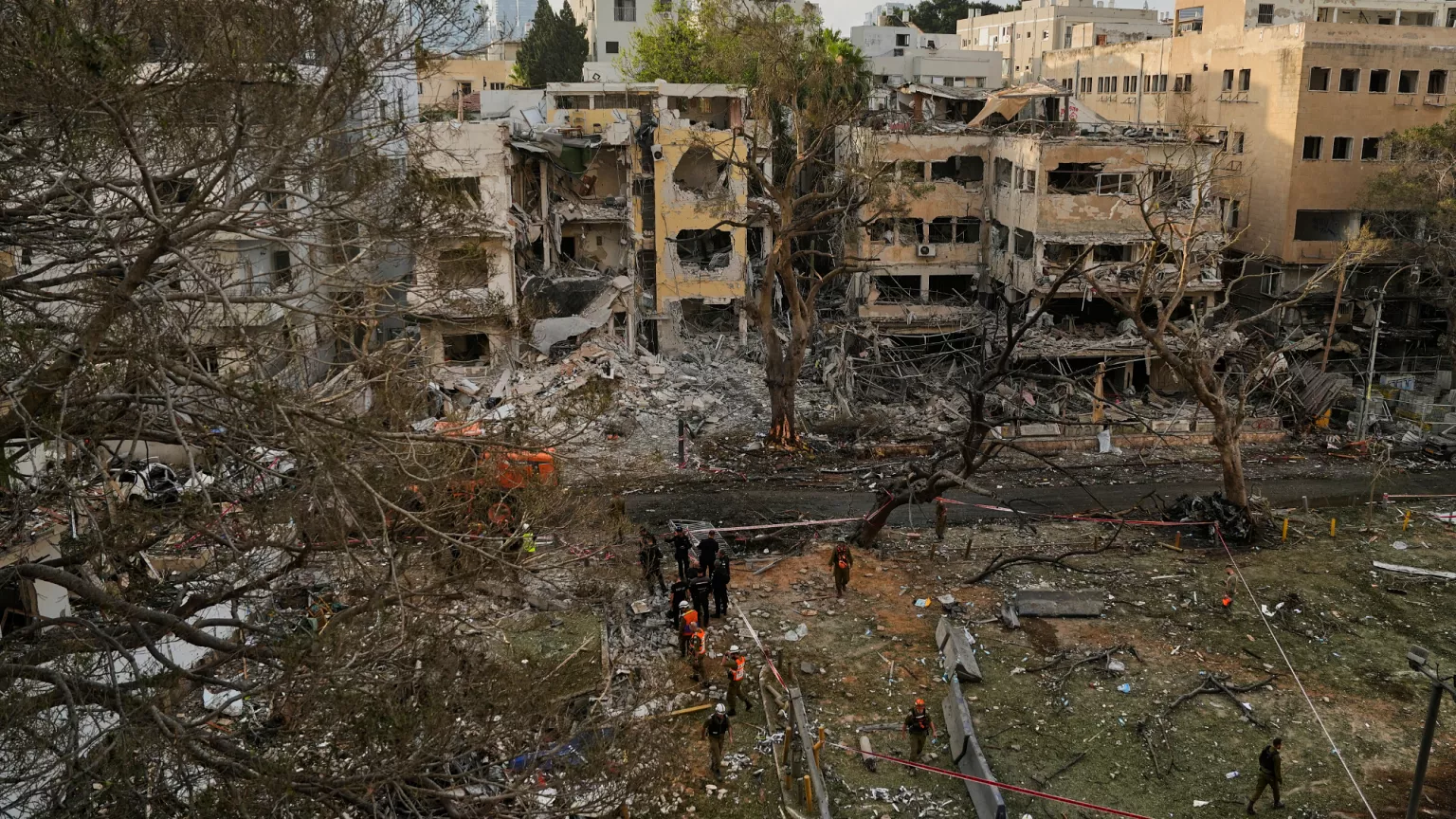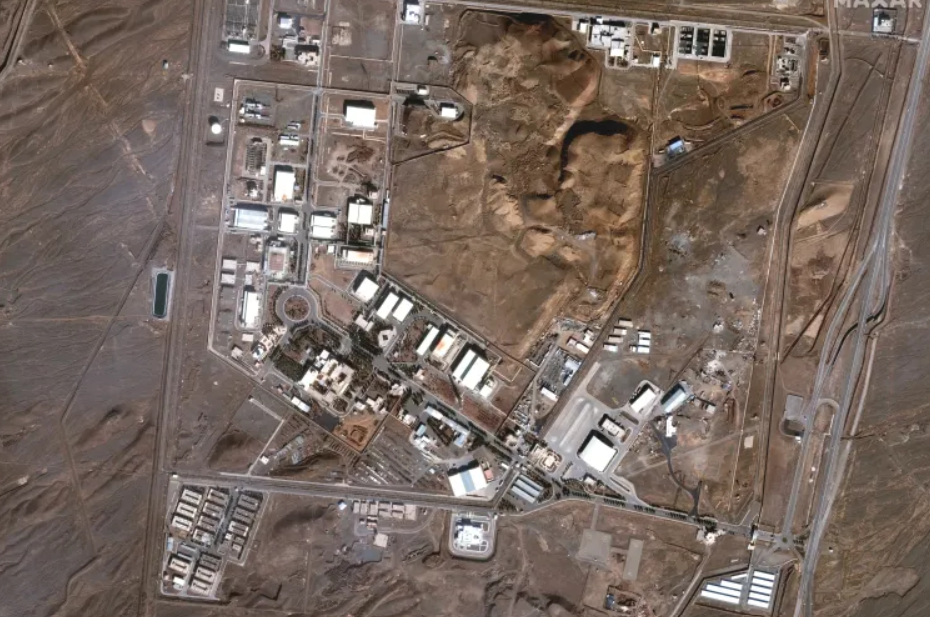In a world already on edge from rising geopolitical conflicts, the latest Israeli airstrikes on Iran Natanz and Isfahan nuclear facilities have escalated fears of nuclear and chemical contamination. With tensions between nuclear-armed nations like India and Pakistan flaring recently and the Russia-Ukraine war threatening Europe’s largest nuclear power plant, the risks of accidental or deliberate radiological fallout are now higher than they have been in decades. This blog explores the causes, consequences, and global implications of these developments.
The Strike on Iran Nuclear Facilities
Israeli Prime Minister Benjamin Netanyahu’s decision to launch direct attacks on Iran’s operational nuclear sites marks a significant escalation in the long-standing hostility between the two nations. While Netanyahu has been vocal for years about the need to dismantle Iran’s nuclear program, this is the first time Israel has conducted overt strikes on functioning Iranian nuclear facilities. The primary target, Natanz, is Iran’s main uranium enrichment hub. It houses advanced centrifuges underground and has been the focal point of Tehran’s nuclear ambitions. According to Rafael Grossi, Director General of the International Atomic Energy Agency (IAEA), the attack destroyed above-ground infrastructure and led to a power outage at the underground centrifuge halls. Though radiation levels outside remain normal, the potential for chemical contamination, particularly from uranium hexafluoride gas, is serious.
Understanding the Chemical Threat
Uranium hexafluoride (UF6) is the gas used to enrich uranium. It is highly volatile and corrosive. If released, it can cause severe burns and respiratory issues, and it poses a long-term environmental threat. Grossi warned that a power outage could damage the centrifuges, potentially causing leaks of UF6 gas. The extent of the damage is unclear, but without timely technical updates from Iran, the IAEA cannot confirm the safety status of the site.A History of Attacks on Nuclear Facilities on Iran
The attack on Natanz is not without precedent. History has seen multiple instances of military actions targeting nuclear facilities, although most occurred before the facilities became operational:- In 1980, during the Iran-Iraq War, Iran attacked Iraq’s Osirak reactor.
- In 1981, Israel destroyed Osirak in Operation Opera.
- During Operation Desert Storm, the U.S. targeted Iraq’s Tuwaitha Nuclear Research Centre.
- In 2007, Israel bombed Syria’s Deir Az Zor reactor just before it became operational.
- Antinuclear activists and separatist groups have also targeted under-construction nuclear sites, such as Spain’s Lemoiz plant and South Africa’s Koeberg station.

Diplomacy Undermined
What makes the Israeli strikes even more alarming is their timing. They came amid renewed nuclear negotiations between the United States and Iran. European Union foreign policy chief Kaja Kallas emphasized that diplomacy, not military action, is the preferred route to prevent Iran from acquiring nuclear weapons. President Donald Trump, while denying U.S. involvement, reaffirmed his commitment to stopping Iran from developing a nuclear arsenal. Meanwhile, Iran insists its nuclear program is for civilian energy purposes.The Risk of Escalation
The attack risks turning the Iran-Israel conflict into a regional or even global confrontation. Several scenarios could now unfold:- Iran may retaliate against Israeli assets or U.S. allies in the region.
- Hezbollah or other Iran-aligned groups could escalate attacks on Israel.
- A breakdown in diplomatic talks could lead to an uncontrolled arms race in the Middle East.
IAEA’s Response and Concerns About Iran-Isreal Situation
The IAEA convened an emergency session to address the developments. Grossi stressed the importance of continuous access and real-time data from Iran to assess any environmental or human health impacts. The lack of transparency and access makes it nearly impossible for the international watchdog to assure the public that there is no danger. Without reliable data, Grossi warned, “the IAEA cannot accurately assess the radiological conditions and potential impacts on the population and the environment.”Nuclear Tensions Beyond the Middle East
The Israel-Iran conflict is not the only nuclear risk currently alarming global experts. In recent months, two other regions have witnessed dangerous escalations:India-Pakistan Confrontation
In May, India accidentally fired a BrahMos missile into Pakistani territory. Though the missile carried a conventional warhead, both nations are nuclear-armed, and such incidents raise fears of miscalculation. Former Pakistani Defence Minister Khurram Dastgir Khan said, “Once the missile is in the air, you cannot know what payload it carries until it hits the target.” This uncertainty is what makes such accidents so dangerous.The Zaporizhzhia Crisis in Ukraine
The Russia-Ukraine war has brought another nuclear facility under threat: the Zaporizhzhia Nuclear Power Plant (ZNPP), Europe’s largest. Seized by Russian forces in early 2022, the plant has become a military base. Russian troops have used the site to launch attacks, effectively daring Ukraine to respond and risk hitting a reactor. U.S. Secretary of State Antony Blinken warned the UN that Russia is “using the plant as a military base to fire at Ukrainians, knowing that they can’t and won’t shoot back because they might accidentally strike a reactor.” In response to escalating risks, the IAEA worked to ensure all reactors at ZNPP were shut down, but the plant remains vulnerable. It still requires electricity and water to cool its spent fuel rods. Any interruption in those systems could cause a meltdown.How Close Have We Come to Nuclear Disaster?
While nuclear weapons have not been used since 1945, there have been several close calls. One of the most well-known is the Petrov Incident in 1983. A false alarm in the Soviet Union’s early-warning system reported an incoming U.S. missile strike. Officer Stanislav Petrov decided not to escalate, believing it to be a false alarm. His decision may have saved millions. Dan Smith, Director of the Stockholm International Peace Research Institute (SIPRI), noted that today’s threats may be more about miscalculation than deliberate attack. He said, “I worry more about someone in a chain of command under pressure reacting mistakenly.”Why the World Must Act Now
Given the increasing number of flashpoints involving nuclear facilities or powers, urgent international cooperation is needed:- Global protocols must be strengthened to protect nuclear sites during conflicts.
- Early warning systems and crisis communication lines should be established between nuclear-armed states.
- IAEA access must be guaranteed, even during armed conflict.
- New treaties may be required to prevent military activity near nuclear sites.


Comments are closed, but trackbacks and pingbacks are open.